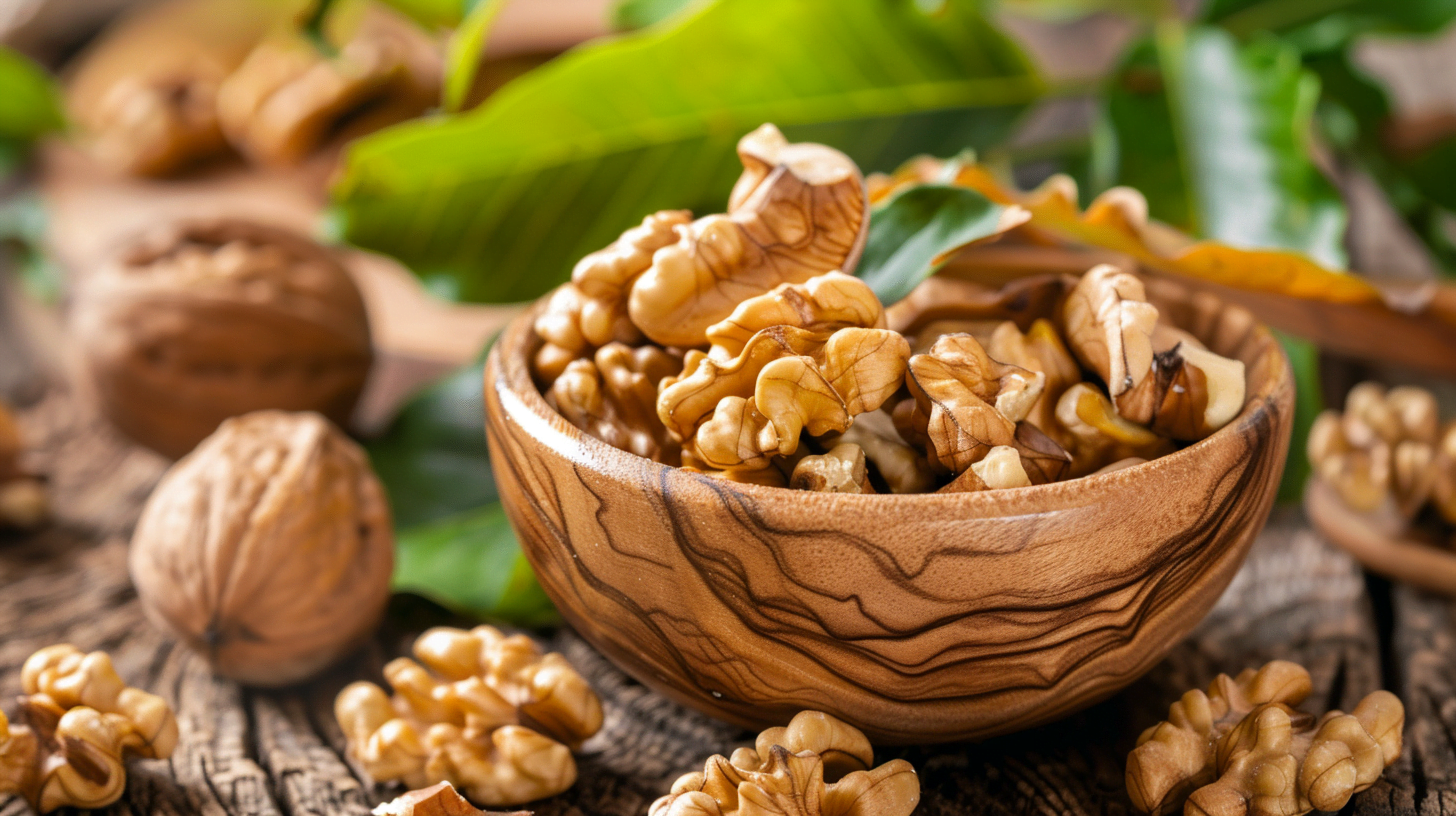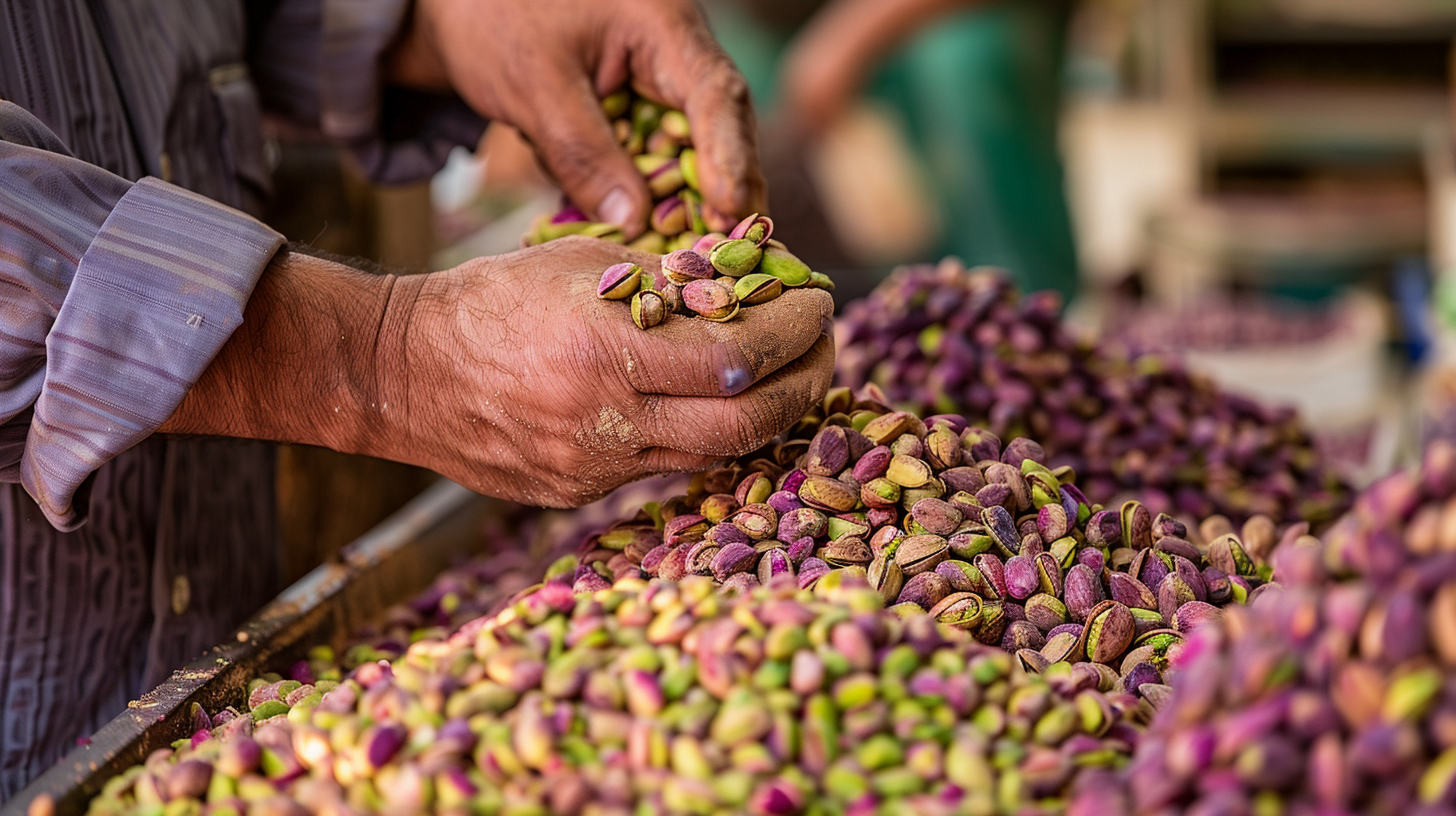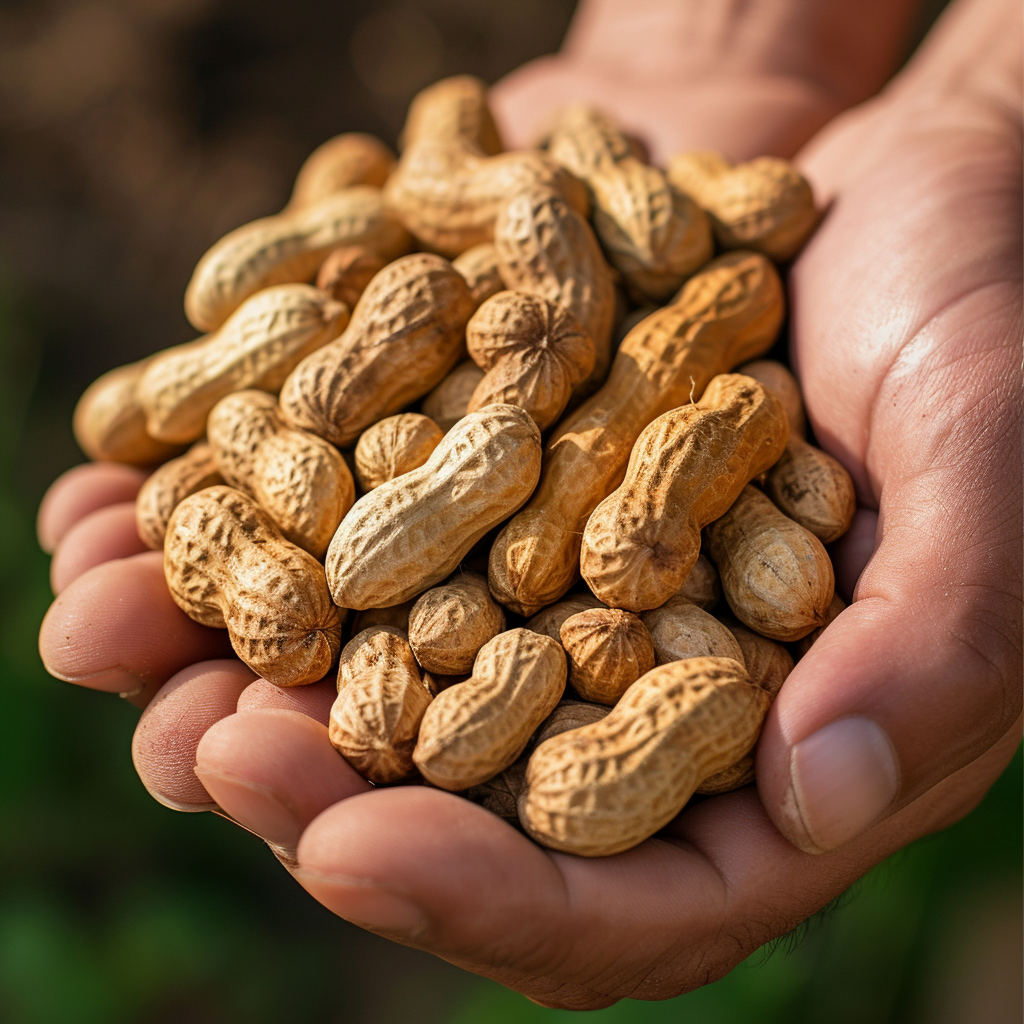Walnuts are a beloved nut around the world, prized for their rich, woodsy flavor and impressive nutrient profile. If you are like me and wonder which country produces the most walnuts. You’re in luck we have done the research for you already. When it comes to global production, one country outpaces all others by a significant margin in cultivating these nutritional powerhouses, China!
A Brief History of the Delicious Walnut
Walnuts have a long and storied history, dating all the way back to 7000 B.C. when they were first cultivated in ancient Persia. In fact, English walnuts and Persian walnuts are botanically the same species, known scientifically as Juglans regia. The ancient Persian Empire stretched from Egypt to India, which allowed the cultivation of walnuts to spread across this vast realm.
As a result, walnuts became an integral part of cuisine and culture across the Near East region. Ancient texts make reference to walnuts; for example, walnuts are mentioned in the Old Testament of the Bible. The nuts were treasured for their delicious taste and versatility in cooking.
Walnuts grow on large deciduous trees that can reach up to 130 feet in height when fully mature. The trees are cold-hardy but require extended winter chilling to produce flower buds each spring. This makes temperate regions with mild summers and cool winters ideal for commercial walnut cultivation.
Centuries later, walnut cultivation slowly spread along the Silk Road trading route towards China and ultimately reached Europe around 2000 years ago. However, it took time for walnut trees to be embraced in China. At first, the Chinese associated them with foreign lands and were reluctant to adopt the nut. But gradually walnuts were incorporated into Chinese cuisine as well.
In Europe, the ancient Romans helped distribute walnuts even more widely across their vast empire. The nuts became a prominent ingredient in many Roman dishes. Following the collapse of Rome, monks sustained walnut cultivation within the walls of their monasteries during the Middle Ages.
The conquests of Alexander the Great helped introduce walnuts to the Greek world. Greece’s climate also proved perfectly suited for growing walnut trees. To this day, Greek cuisine includes many classic walnut-based dishes like baklava.
Native American tribes also harvested walnuts from wild trees long before European settlement of North America. But the crop wasn’t cultivated commercially until English walnut trees were brought by settlers travelling west.
So while walnuts originated in Persia, they managed to spread across Europe, into Asia, and also became established in North America – thanks to their delicious taste and hardy nature. Today, walnuts are grown commercially across the world, but a few key countries dominate global production.
Why Are Walnuts So Healthy?
Walnuts have an excellent nutritional profile, which also contributes to their sustained popularity across cultures. Here are some of the ways that walnuts boost health:
- Rich in antioxidants – Walnuts contain high levels of polyphenol antioxidants that fight inflammation and free radicals in the body. This can help lower risk of chronic diseases.
- Packed with Omega-3s – The ALA Omega-3s in walnuts support heart health by reducing blood pressure and lowering LDL cholesterol. The Omega-3s also promote brain function.
- Protein powerhouse – Walnuts contain 4 grams of protein per 1 ounce serving, making them an excellent protein source for vegetarians and vegans.
- Fiber filled – A serving of walnuts provides about 2 grams of dietary fiber that promotes digestive and heart health.
- Vitamin E – Walnuts have significant amounts of vitamin E. This essential nutrient strengthens the immune system and acts as an antioxidant in the body.
- Minerals – Minerals like manganese, copper, phosphorus, magnesium, and zinc are all found in walnuts. These provide structural and metabolic benefits.
- Cardiovascular benefits – Regular walnut consumption is associated with lower risk of heart disease. Walnuts may also improve infertility issues, metabolic syndrome, and endothelial dysfunction.
- Cognitive advantages – The nutrients and antioxidants in walnuts enhance brain health and may delay onset of dementia or Alzheimer’s disease.
- Anti-cancer properties – Certain compounds found in walnuts like antioxidants, melatonin, and phenolic acids suppress growth of cancer cells.
- Bolster bone health – Manganese, phosphorus, copper, and magnesium in walnuts support bone metabolism and fight osteoporosis.
With all of these proven benefits, it’s no wonder that walnut consumption is on the rise worldwide. Because they’re so versatile, walnuts can be easily added to salads, baked goods, breakfast cereals, and even entrees. Their rich, slightly sweet taste complements both sweet and savory dishes. For a simple snack, you can’t go wrong by just grabbing a handful of raw walnuts.
Leading Walnut Producing Countries
Several countries around the world cultivate walnuts commercially, but five in particular stand out for their large-scale production:
| Country | Annual Walnut Production (metric tons) |
|---|---|
| China | 2,500,000 |
| United States | 559,000 |
| Iran | 450,000 |
| Turkey | 210,000 |
| Ukraine | 68,000 |
As these statistics clearly indicate, China dominates the global walnut industry, producing over 50% of the world’s walnuts. China’s nearest competitors – the United States and Iran – each produce well under 20% of China’s enormous walnut output.
Within China, the primary walnut-growing provinces are Xinjiang, Shandong, Yunnan, Tibet, and Qinghai. Xinjiang province accounts for over 70% of Chinese walnut production because of its ideal dry climate. Shandong province along China’s eastern coast is the second biggest walnut producer.
China – The Walnut Behemoth
China has cemented its status as the world’s foremost walnut producer and exporter for several key reasons:
- Ideal climate conditions – Walnut trees thrive in China’s temperate northern regions like Xinjiang and Shandong provinces. The climate promotes nut development.
- Government support – China’s national and regional authorities have placed strategic importance on walnut production through subsidies, initiatives, and investments.
- Efficiency gains – China’s walnut farms increasingly utilize high-tech, high-density planting for better yields. Drip irrigation systems are also now common.
- Massive scale – Over 1.45 million acres of land are dedicated to walnut farming across China. The country added 115,000 acres in 2020 alone.
- Improved processing – Better post-harvest processing, like shelling machines, has boosted productivity and quality.
Additionally, walnut grafting techniques have been widely adopted in China to produce more uniform, high-yield trees. Extremely productive Chandler variety walnut trees, imported from California, are now commonly planted.
China’s walnut exports have exploded over the past decade, with Europe as the top destination. China provides around 80% of all walnut imports for the entire European Union. Germany, Spain, Italy and the Netherlands purchase the most Chinese walnuts in Europe.
Inside China, walnuts have become a popular snack food and cooking ingredient as well. Domestically, Yunnan province consumes the greatest volume of walnuts. The nuts are either eaten raw or used in classic Chinese desserts like walnut cake. Overall, China’s booming walnut industry has been a major success story driven by ideal climate, strategic support, and rapid modernization.
United States: #2 in Walnuts
The United States is the world’s number two walnut producer, but still lags far behind agricultural titan China. The U.S. produces around 559,000 metric tons annually, which is less than a quarter of China’s output.
Unlike China, the vast majority of American walnut cultivation is confined to one state – California. The Golden State produces 99% of all the walnuts grown in the U.S. This is because California offers prime walnut-growing conditions.
The Central Valley region of California has very hot, dry summers combined with mild wet winters – ideal for walnuts. Moreover, California adopted the superior Chandler walnut variety early on which significantly boosted crop yields. Currently over 95% of Californian walnuts are Chandlers.
California dominates the U.S. walnut industry, with annual production concentrated in San Joaquin Valley and Sacramento Valley counties. Well over 300,000 acres of land are planted with walnut orchards across these parts of California.
In export markets, China and Spain are top destinations for Californian walnuts. Domestically, walnuts are a multi-purpose ingredient in the U.S. They can be incorporated into salads, desserts, cereals, baked goods, and much more. Overall, the walnut industry contributes over $1.6 billion annually to California’s economy.

Iran’s Vital Walnut Sector
The Islamic Republic of Iran ranks third globally in walnut production, supplying around 450,000 metric tons per year. The country has a long history cultivating these nuts.
Walnuts are believed to have first spread from Persia to ancient Greece, so growing them has deep roots in Iranian culture. Today, walnuts remain integral to Iranian cuisine. Traditional dishes like fesenjan stew, walnut kofta, and walnut bread incorporate the nuts.
Plus, walnuts are popular snacks and sides to enjoy with tea. Iranians consume a lot of walnuts, but also export them widely.
The major walnut producing provinces in Iran are Fars, Khorasan Razavi, Qazvin and Semnan. Together they cultivate over 280,000 acres of Persian walnut trees. The Ghazvini variety, known for large nuts with thin shells, dominates production.
Cooler northern regions like Qazvin and Semnan provide excellent conditions for walnut growth. Southern areas like Fars have a warmer climate but sustain walnut orchards through irrigation. Generally, walnuts are grown on small family farms in Iran rather than massive commercial plantations.
Low labor costs and affordable irrigation give Iran competitive advantages in walnut production. The country has also invested in walnut harvesting technology like specialized shaker machines. However, processing infrastructure and farming techniques still lag behind walnut leaders like China and the U.S.
In export markets, Iran sells most of its walnuts to European countries like Germany, Russia, Austria, Italy, and Bulgaria. Gulf nations like the UAE and India are secondary buyers. But in recent years, economic sanctions have obstructed Iranian walnut exports, allowing other producers to grab more market share.
Going forward, Iran has potential to modernize its walnut sector through new nursery technologies, processing facilities, and agricultural research. If trade barriers can be removed, Iran’s walnuts exports could thrive again.
Turkey’s Prominence in Walnuts
Turkey produces around 210,000 metric tons of walnuts annually, making it the world’s fourth largest walnut supplier. The country is well-positioned for walnut cultivation since it sits squarely within the nut’s ancestral homeland.
Long before any modern country formed, ancient Persia stretched through parts of modern Turkey. This is why Turkey has ideal dry growing conditions for walnut trees. Rainfall is sparse during summer when walnuts are developing.
The main walnut growing areas are spread across central and eastern Anatolia. Şanlıurfa Province in southeastern Turkey accounts for nearly half of national production. Giresun and Bingöl provinces are other major walnut hubs.
Domestically, walnuts are widely incorporated into Turkish desserts like baklava and keşkül. But over 85% of Turkey’s annual walnut output gets exported abroad. This demonstrates how the industry revolves around foreign sales.
The leading importers of Turkish walnuts are Germany, France, the Netherlands, Russia, and Italy. Demand in these European markets has fueled the expansion of Turkey’s walnut acreage over recent decades. Experts estimate over 200,000 acres are now dedicated to Turkish walnut orchards.
However, climate change threatens long-term walnut production across Turkey’s interior. Rising temperatures and shifted precipitation patterns could diminish yields. This demonstrates how the ideal climate conditions that benefit walnuts can also be disrupted by climate change.
Ukraine’s Emerging Walnut Sector
Ukraine is globally the fifth largest walnut producer with annual output of around 68,000 metric tons. But the country’s walnut sector has rapidly expanded over the last decade and has yet to reach peak production.
Walnuts trees were first introduced to Ukraine several centuries ago. But it wasn’t until the 2000s that Ukraine’s government recognized walnuts as a strategic crop and provided subsidies to fuel growth in commercial walnut orchards.
Most of Ukraine’s walnuts orchards are concentrated in the western part of the country, which enjoys optimal climatic conditions. Vinnytsia, Chernivtsi, Ivano-Frankivsk and Zakarpattia regions are top walnut producers.
Ukraine’s walnut sector has benefited from knowledge sharing and investments from European nations. High-density, drip irrigation planting systems have been implemented to enhance efficiency.
The European Union purchases over 90% of Ukraine’s walnut exports. Germany, Poland, Austria, and the Netherlands lead in imports of Ukrainian walnuts. But domestic demand is also rising as walnuts gain popularity.
Analysts forecast that Ukraine could produce up to 140,000 metric tons of walnuts annually within the next decade. This demonstrates the growth potential. But conflict in eastern Ukraine has created challenges for the nascent walnut industry in recent years.

Other Notable Walnut Producers
Several other countries produce walnuts in significant commercial quantities:
- Moldova – An emerging walnut grower, Moldova exports most production to the EU.
- Romania – Traditional cultivation country with exports to Western Europe.
- France – Europe’s third largest walnut producer with renowned Grenoble nuts.
- India – Upcoming player with ideal walnut regions in the western Himalayas.
- Russia – Historic producer but orchards were neglected after Soviet collapse.
- Chile – Southern Hemisphere counterpart to California as key walnut supplier.
- Mexico – Steady grower of walnuts, mostly in central highlands.
- Australia – Marginal climate but irrigated orchards produce good walnut crops.
So while China thoroughly dominates global walnut output, numerous secondary producers across Europe, Asia, the Americas, and Oceania also cultivate and export walnuts. But none come remotely close to matching China in sheer scale and quantity.
Projecting Future Walnut Production Trends
According to industry analysis, global demand for walnuts is expected to rise steadily in the coming years and decades. Much of the increased demand will come from Asian markets like China, India, and Southeast Asia as populations grow wealthier.
At the same time, established markets like the U.S. and Europe will also consume more walnuts based on health trends. Rising rates of food allergies and restricted diets are making tree nuts like walnuts the choice over peanuts.
To meet surging worldwide demand, underserved markets in South America, Africa, and Oceania will likely emerge as new walnut suppliers. But environmental sustainability will be a key challenge, as walnut farming requires significant water resources.
China will certainly maintain its dominance as the foremost walnut producer and exporter. But its global market share may gradually decline to around 40% as other origins ramp up production. The U.S. and Chile in the Western Hemisphere will remain major players as well.
Domestically within China, innovative technologies like artificial pollination and high-density orchards will further intensify walnut yields. Chinese varieties like Xiangling may give even higher yields than U.S.-sourced Chandlers.
Turkey and Eastern Europe also have substantial room for growth if optimal cultivation practices are implemented. So while demand is rising across the board, countries will compete to capture the most growth.
When it comes to walnuts, China is sure to lead the pack for the foreseeable future. But global production will need to expand in creative and sustainable ways to satisfy the world’s appetite for this nutritious treat.
Conclusion: China – The Walnut Juggernaut
In conclusion, China has established itself as the dominant walnut producer worldwide thanks to ideal climate conditions, major government support, rapid modernization of farming methods, and simply massive scale.
The country cultivates over 2.5 million metric tons annually – more than double the output of closest competitor the United States. Europe has become dependent on Chinese walnut imports to meet demand.
Within China’s borders, walnuts have also emerged as a popular nutritious food in their own right. They are either eaten raw as a snack or incorporated into diverse baked goods and desserts.
Other major walnut suppliers like the United States, Iran, Turkey, and Ukraine fill important niches regionally. But none come close to matching China’s supersized walnut industry.
Even as competitors ramp up production and new walnut origins emerge, China with its existing momentum and vast resources is sure to maintain dominance as the walnut giant.
So the next time you bite into a delicious walnut, chances are it originated from China – the world’s foremost walnut juggernaut!



